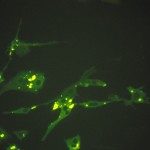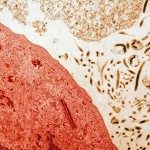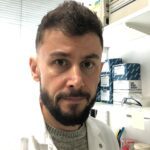Link to Pubmed [PMID] – 22585682
Eur. J. Immunol. 2012 Jul;42(7):1822-32
Lassa virus (LASV) and Mopeia virus (MOPV) are closely related Arenaviruses. LASV causes hemorrhagic fever, whereas MOPV is not pathogenic. Both viruses display tropism for APCs such as DCs and macrophages. During viral infections, NK cells are involved in the clearance of infected cells and promote optimal immune responses by interacting with APCs. We used an in vitro model of human NK and APC coculture to study the role of NK cells and to characterize their interactions with APCs during LASV and MOPV infections. As expected, NK cells alone were neither infected nor activated by LASV and MOPV, and infected DCs did not activate NK cells. By contrast, LASV- and MOPV-infected macrophages activated NK cells, as shown by the upregulation of CD69, NKp30, and NKp44, the downregulation of CXCR3, and an increase in NK-cell proliferation. NK cells acquired enhanced cytotoxicity, as illustrated by the increase in granzyme B (GrzB) expression and killing of K562 targets, but did not produce IFN-γ. Contact between NK cells and infected macrophages and type I IFNs were essential for activation; however, NK cells could not kill infected cells and control infection. Overall, these findings show that MOPV- as well as pathogenic LASV-infected macrophages mediate NK-cell activation.



